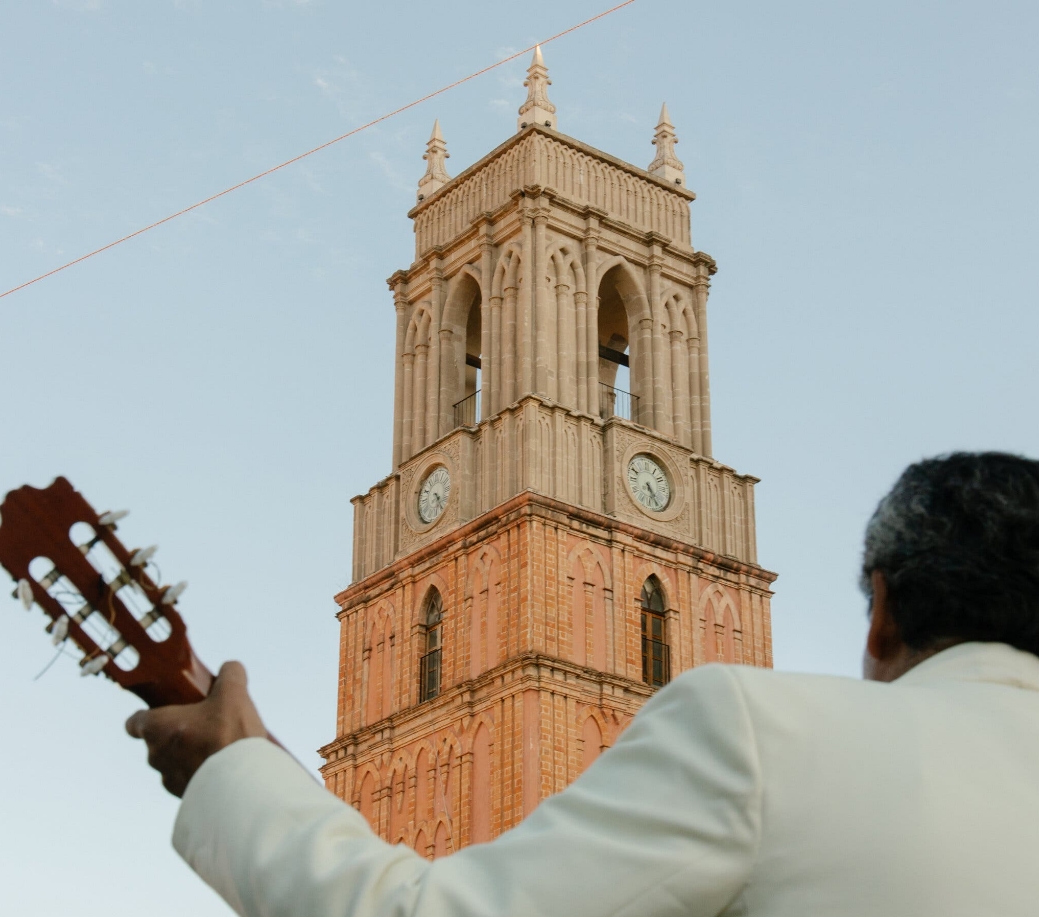Link to Article: https://www.nytimes.com/2023/03/08/fashion/clock-san-miguel-de-allende-mexico.html
In the Mexican city of San Miguel de Allende, the Vázquezes have maintained the town clock for four decades.
SAN MIGUEL DE ALLENDE, Mexico — Every Monday morning Daniel Vázquez unlocks the door to the clock tower on the central square of this postcard-perfect city and climbs a ladderlike series of wooden steps, 50 in all, to wind a French mechanical clock that has marked the passage of time here for more than 120 years.
He has cared for the clock for the last four of those years, taking over the duties that his father — a watchmaker named Raúl Vázquez, now 77 — handled for about four decades.
It is not a full-time job, but it does require constant attention, Daniel Vázquez said during a recent visit to the 90-foot stone tower. The 42-year-old typically climbs up five times a week to check on the timepiece and make any minor adjustments. And between visits, his ears are attuned to the clock’s three bells, which ring every quarter-hour.
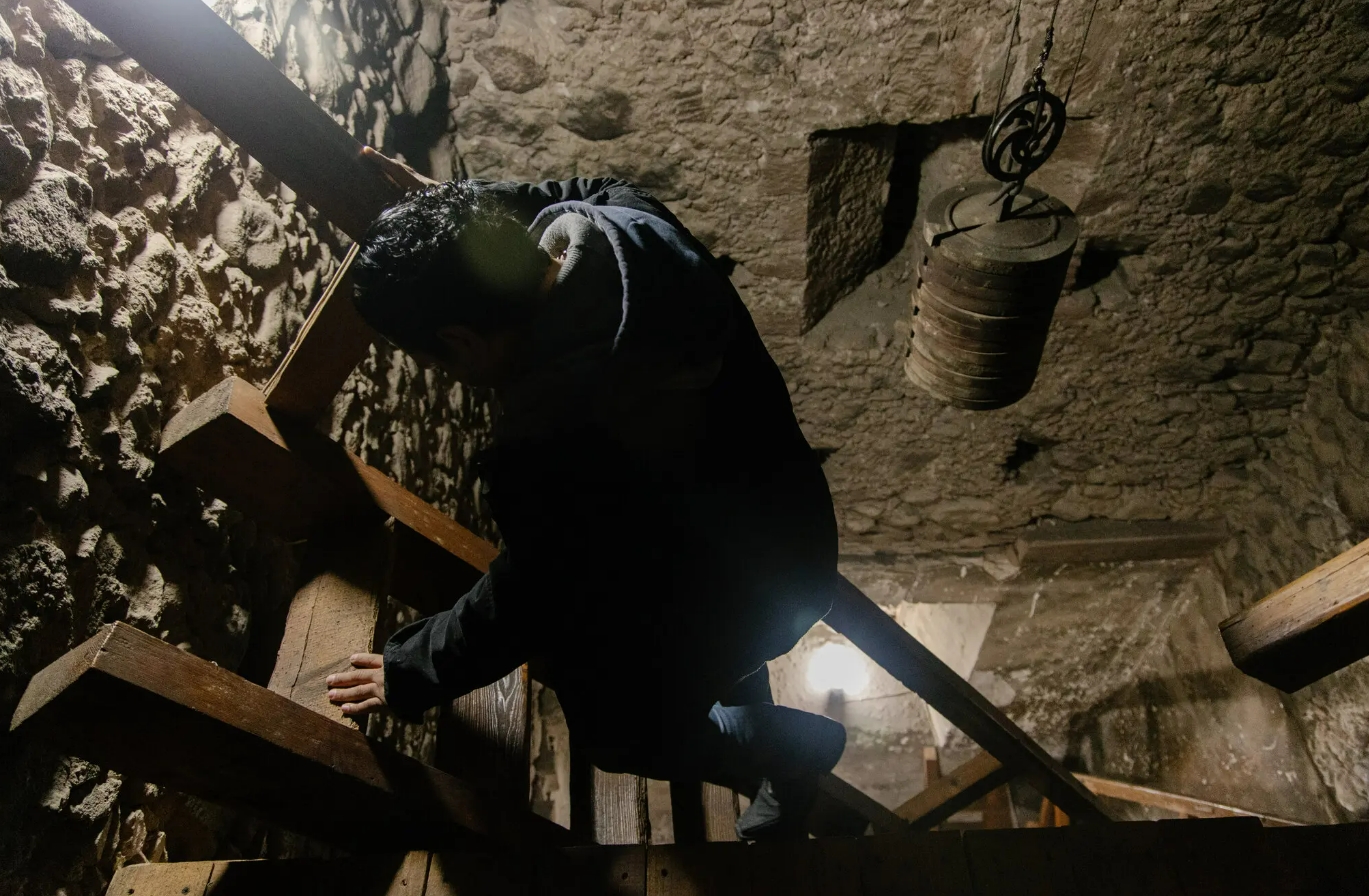
Daniel Vázquez, who takes care of the more than century-old clock, descends ladders to the bottom of the tower. In the background, the clock’s weights hang from cords.Credit…Jackie Russo for The New York Times
If they start to lag behind the time on his cellphone, he said, he goes back to tweak the pendulum, rocking it back and forth with his hands to speed up the time by a few seconds.
In the tower room, the clock mechanism rests on a platform of large wooden beams; during a visit one morning, the bronze, copper and steel of its wheels and gears were gleaming in the sunlight that streamed through the three painted glass clock faces that look out over the city.
Any machine needs a little human assistance, Mr. Vázquez said: someone to keep it clean, oiled and in good repair. “This is a more than 100-year-old mechanical clock that works by itself,” he said, “with some help from man.”
The way he sees it, he explained, he and the clock work together. (He was about 10 when he first became fascinated by the clock, he said, and as a teenager would sometimes help his father with its weekly winding.)
Maintaining the clock is not a volunteer effort; the municipal government pays the Vázquez family’s watch repair business, Relojería Raúl, for the work. Mr. Vázquez, who trained as an architect but now does clock repairs for the business, declined to say how much they receive, but added that the honor of taking care of the “jewel” for the people of San Miguel was “the best pay.”
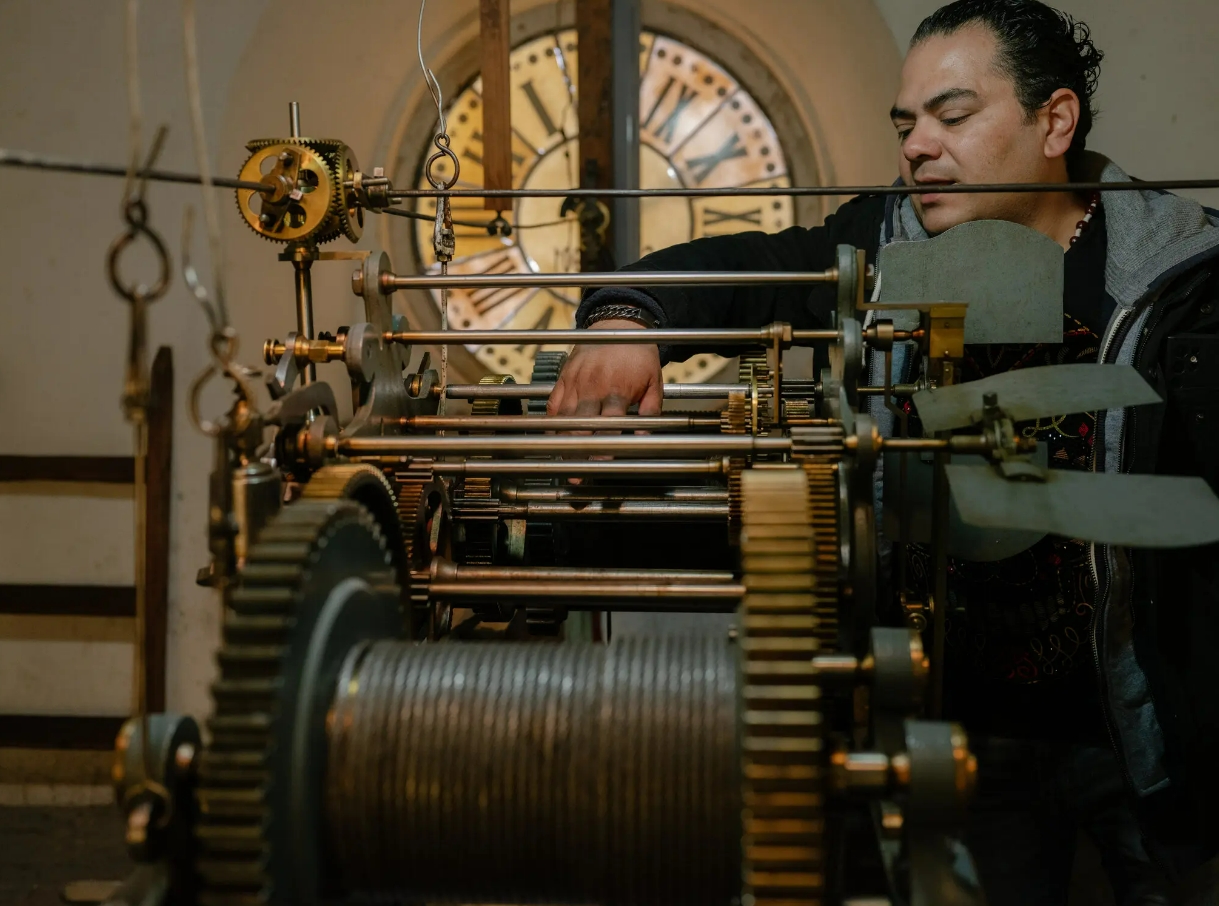
Mr. Vasquez explaining the different parts of the clock mechanism. He maintains the timepiece five times a week.Credit…Jackie Russo for The New York Times
The job does require some physical exertion, especially when the clock is wound. Mr. Vázquez said he had to use just the right amount of force and a steady rhythm to crank up its heavy hanging weights. Over the course of the week, as the weights are pulled down by gravity, the energy that is produced is released through the mechanism’s gear train, driving the clock’s movement and turning the hands on the three faces.
While a motor could do the winding, he said, the effort makes his heart beat a little faster, literally and figuratively: “It makes me feel like I’m part of the energy of this clock.” (And when he is alone in the tower, Mr. Vázquez said, he finds its ticktock sound soothing.)
Every three years or so, Mr. Vázquez dismantles the clock for servicing, taking it out of commission for a couple of weeks. His brother, Raúl, who occasionally helps him, usually lends a hand for such substantial maintenance. And Rafael García, one of his cousins, sometimes assists, too.
The city does not have a record of the clock’s origins; José Emilio Lara, who runs the city’s Historic Center and World Heritage Office, said that some municipal files had been lost.
The manufacturer’s name is not visible on the mechanism, although it does have a logo featuring a lion and the words “registered trademark” in French, as well as the logo of its importer, a jewelry company in Mexico City called La Esmeralda Hauser Zivy y Compañía that was prominent in the late 19th century.
Based on photographs and videos he has seen of the clock, the French watchmaker Colin de Tonnac says he believes it is an 1897 model produced in the town of Morez, in eastern France, by the company Paul Odobey Fils. It was one of the leading manufacturers of monumental clocks at the time, according to Mr. de Tonnac, who runs the watch restoration business in France Semper & Adhuc (“from always until now,” in English).
(Monumental clocks are an industry term for large timepieces mounted on a building or in a public space.)
What makes the San Miguel clock special, Mr. Tonnac said in a video interview, is that it appears to have been very well maintained. That is not always the case, he said, noting that in France, some mechanical clocks on buildings have fallen into disuse and ended up for sale online.
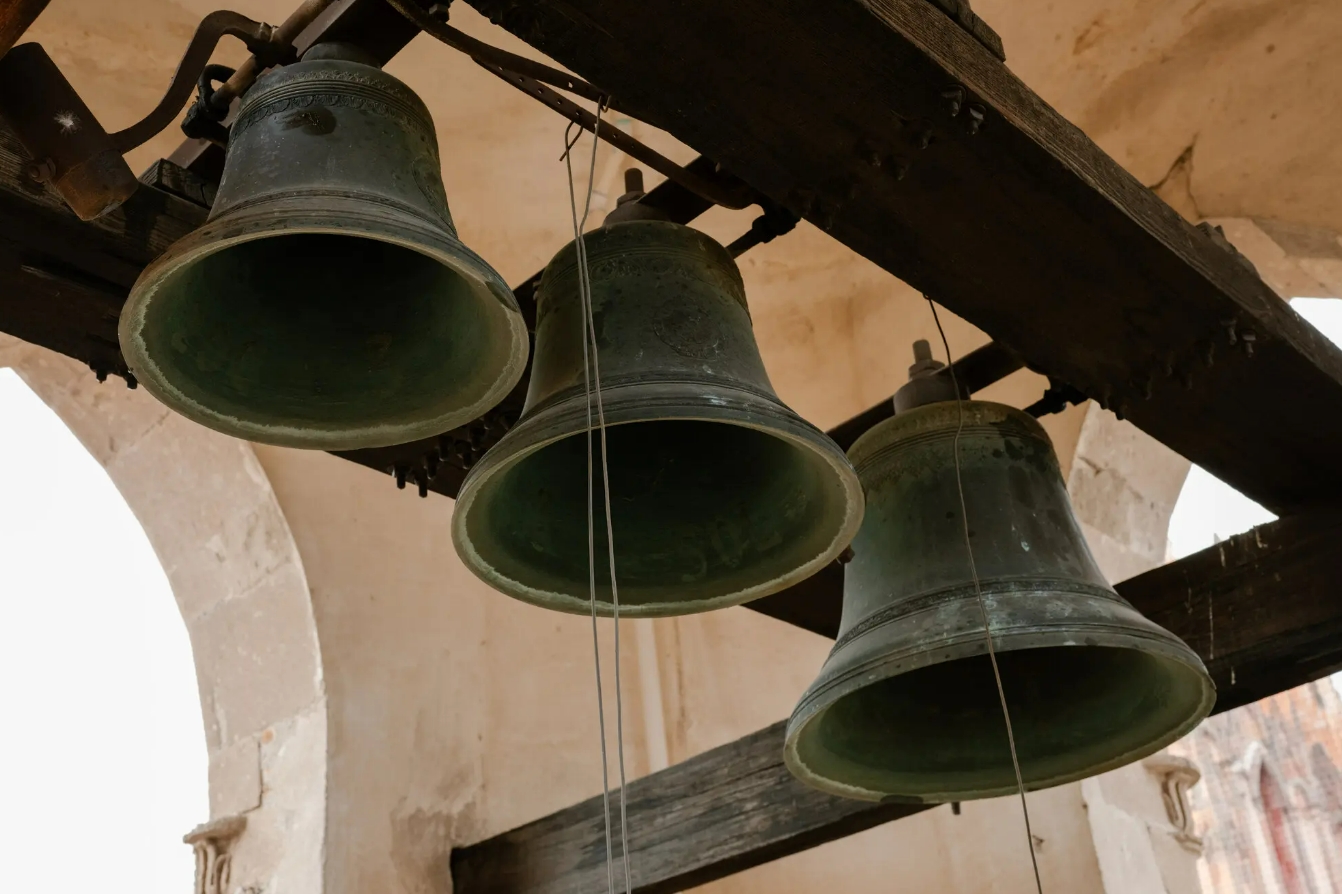
The bells, which ring every quarter-hour, in the clock tower. The bells tend to dominate the soundscape. “It’s what identifies the town,” Mr. Vázquez said.Credit…Jackie Russo for The New York Times
Dominating the Soundscape
In the center of San Miguel, a UNESCO World Heritage Site, the clock tower is not what first draws the eye; that distinction belongs to the Parroquia de San Miguel Arcángel, the soaring neo-Gothic Roman Catholic church next door.
But the clock’s bells tend to dominate the soundscape. According to Daniel Vázquez, “It’s what identifies the town.”
Raúl Vázquez said that, years ago, the head of the local hotel association suggested that the clock bells be silenced at night so tourists staying in the city would not be disturbed. His response, “Not even if the governor were to ask me would I do that.”
In the garden between his house and the shop, about two-thirds of a mile from the clock tower, the toll of the bells was soft and muted. But in the city’s tree-shaded central plaza, called the Jardín (garden, in English), their sound was loud and clear.
The two smaller bells, tuned to the musical notes “la” and “sol,” sound every 15 minutes, one after the other — one set at a quarter after the hour, two sets on the half-hour and so on. And the large bell, tuned to the lower note “re,” tolls the hour. So at noon and midnight, for example, four sets of the smaller bells are followed by 12 tolls from the large bell.
Mr. Lara of the Historic Center Office said he sometimes found himself paying attention to the bells, especially when he was not wearing a wristwatch or his phone’s battery had died.
Sometimes tourists do complain about the chorus of bells at different times of day from the many churches in the city, he said. But as someone born and raised in San Miguel, he said he was not bothered by the clock’s bells at night.
“It’s more like there are times when I can’t sleep because I don’t hear them,” he said with a smile.
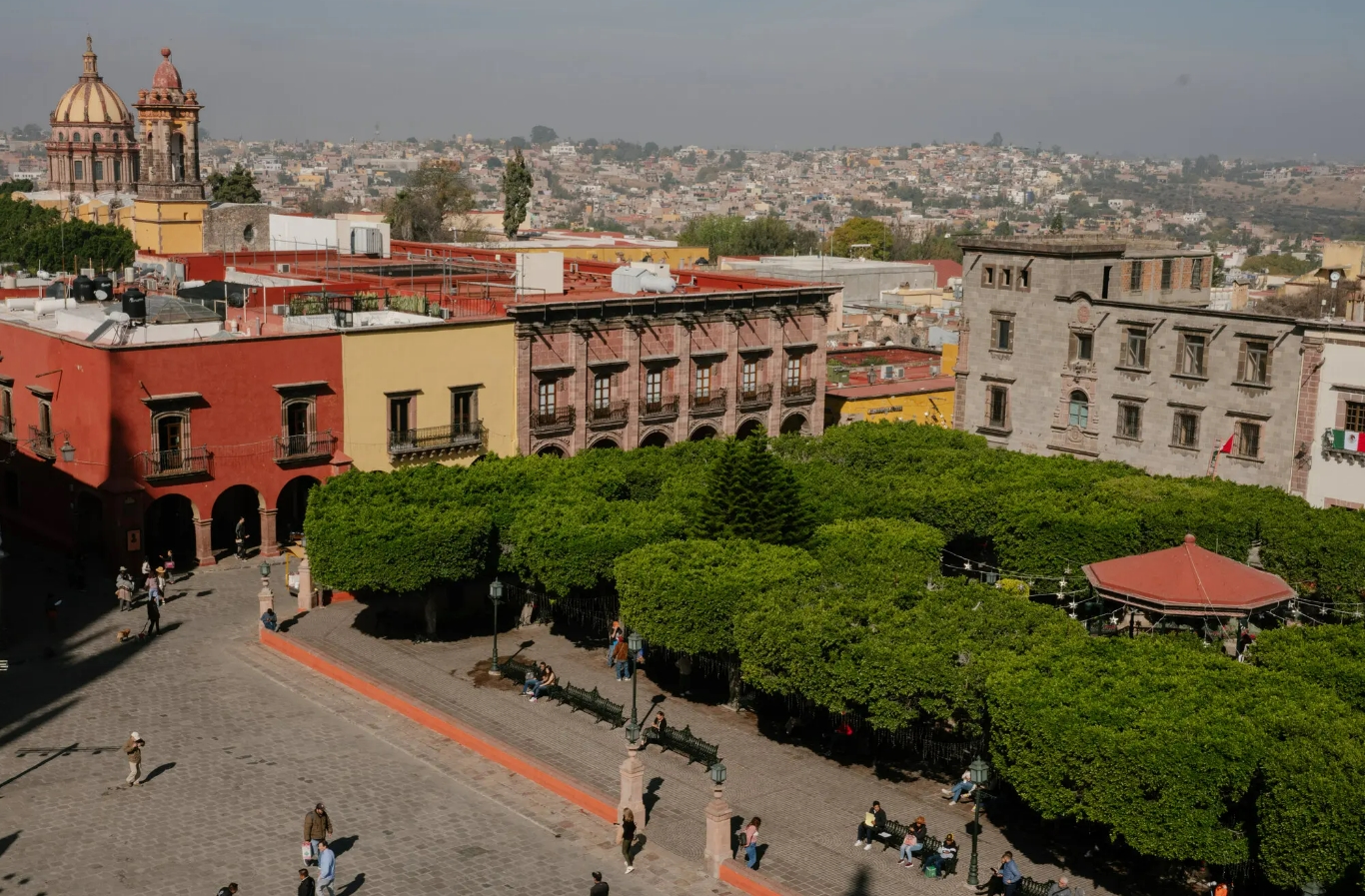
The bells, which ring every quarter-hour, in the clock tower. The bells tend to dominate the soundscape. “It’s what identifies the town,” Mr. Vázquez said.Credit…Jackie Russo for The New York Times
In the City’s History
While San Miguel dates its founding to 1542, the Parroquia, the adjacent chapel Templo de San Rafael, and the clock tower were all built on the central square during the 1600s.
In the 1880s a master mason named Zeferino Gutiérrez gave the Parroquia its ornate facade of pink quarry stone; he then remodeled the clock tower, adding four pinnacles to its roofline so the buildings would have a more harmonious look. (Before the remodeling, a Spanish clock that had been in the tower was moved to a different site in the city.)
The religious complex is managed by the local Roman Catholic parish, but — as is the case with Spanish colonial-era churches throughout Mexico — it is considered a historic monument and is owned by the federal government, according to Mr. Lara. The municipal government, he said, oversees the clock.
The French clock arrived in San Miguel during an era now called the Porfiriato — named for General Porfirio Díaz, who ruled Mexico for more than three decades starting in 1876.
Public clocks proliferated in towns and cities across Mexico during those years, and, according to several experts, many of them came from France — perhaps because Díaz was a Francophile. (The exiled strongman spent his last years in Paris and is buried there in Montparnasse Cemetery.)
“The clock represented modernity,” said Markus Frehner, the founder of Museo del Tiempo, a museum devoted to time in Tlalpan, a southern district of Mexico City. “It was progress.”
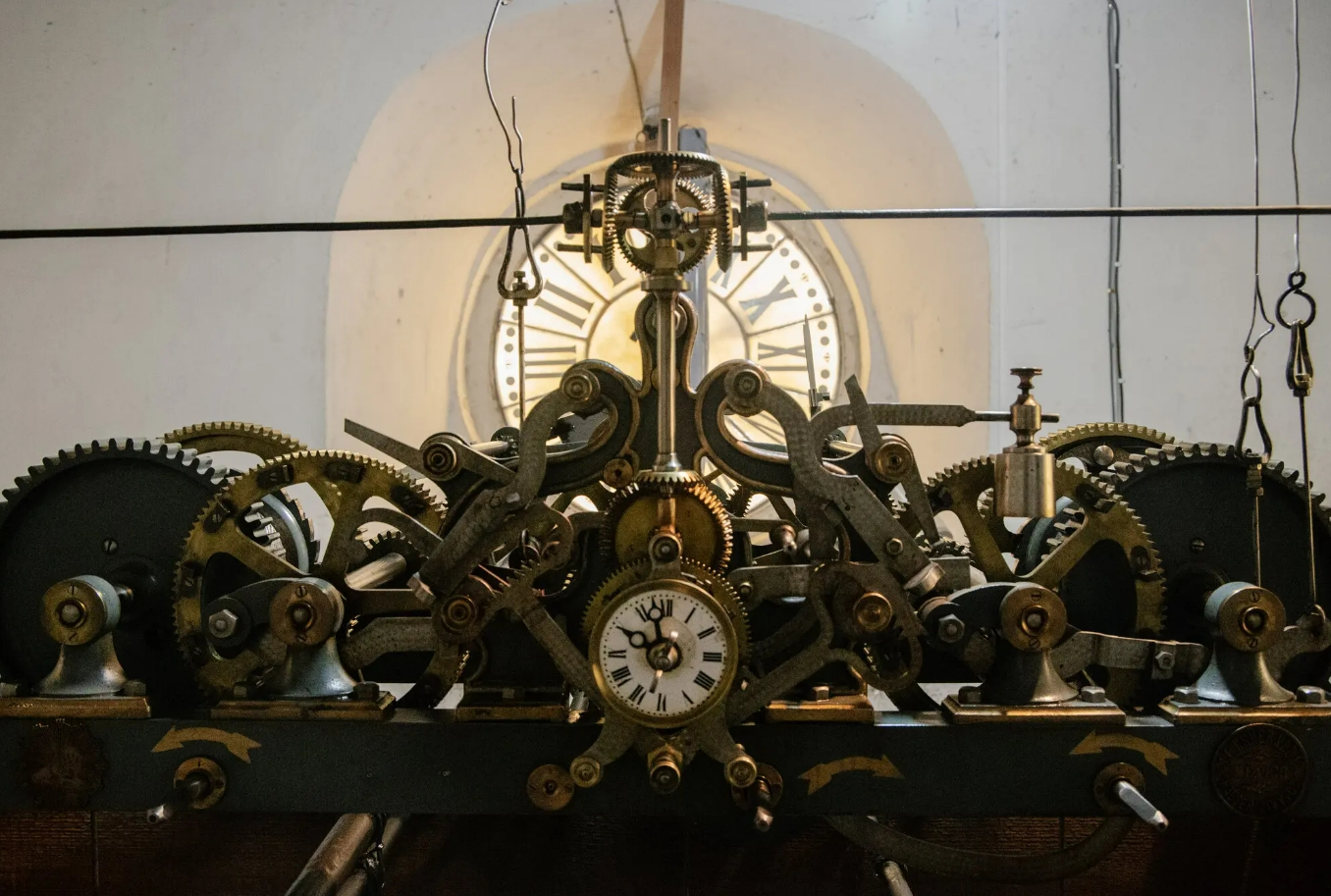
The mechanism of the clock, which was made in France.Credit…Jackie Russo for The New York Times
But bringing such a clock from Europe to Mexico would have been an expensive, time-consuming process, he said: The disassembled clock and its bells would have been taken from the factory by train to a seaport, shipped to the Mexican port of Veracruz and then sent to Mexico City for assembly before reaching its final destination.
Mr. Frehner, who is sometimes called on to restore old clocks, said public clocks from this period could still be found across Mexico; he has counted more than 50 in the Benito Juárez district of Mexico City alone. Unfortunately, he said, many of the country’s old clocks are no longer working.
Aside from sporadic disruptions for maintenance, San Miguel’s clock has been ticking most of the time since its official inauguration on Sept. 16, 1901. (The day is celebrated as Independence Day because on that day in 1810 Father Miguel Hidalgo made his cry for Mexican independence from Spain — which finally happened in 1821. The holiday is celebrated with great fanfare in San Miguel de Allende, the birthplace of the independence hero Ignacio Allende, whose family name was added to the city’s in 1826.)
There was one period, however, when the clock was left unattended for several years, the elder Mr. Vázquez said.
During the church-state conflict in the mid- to late 1920s known as the Cristero War or Cristero Rebellion, the city’s churches were abandoned and combatants hid out in the base of the clock tower. When they left, the walls were blackened with soot and pockmarked with bullet holes, he said, although the clock was not damaged.
There have been other small incidents, too. Last year, for example, during one of the city’s many fiestas, a stray rocket during the fireworks hit one of the clock faces, knocking out three of the small glass panes that display the hours in painted Roman numerals. The clock itself was not damaged, but the broken panes had to be replaced.
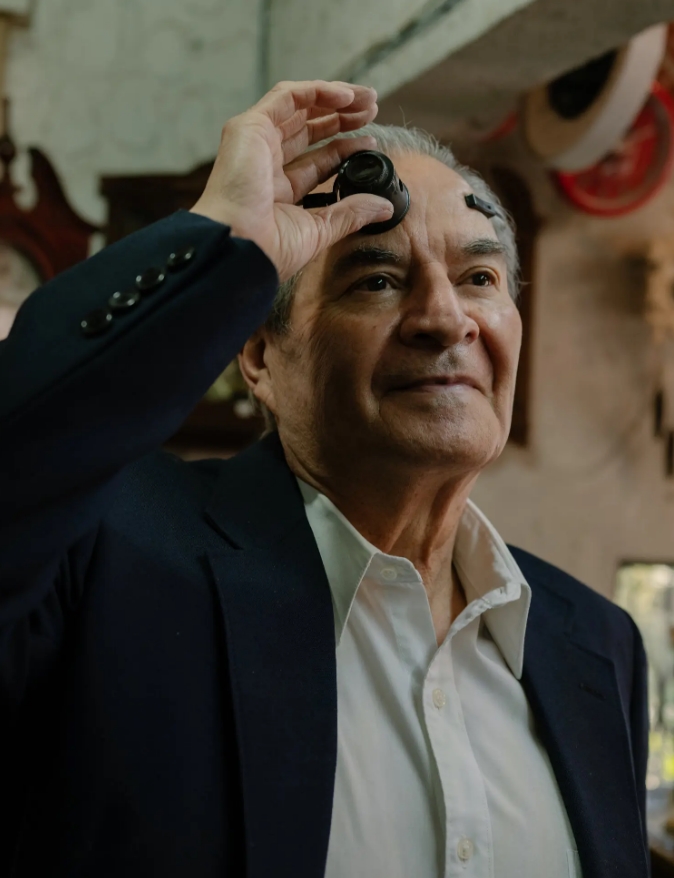
Daniel’s father, Raúl Vázquez, now 77, took care of the clock for decades until Daniel stepped in. Other family members also occasionally help out.Credit…Jackie Russo for The New York Times
A Commitment to Service
Keeping a mechanical clock going takes a real sense of commitment, said Clemente Olvera, who heads a more than century-old clock manufacturing company called Relojes Olvera III Generación and a clock museum, Museo del Reloj, both based in Zacatlán, in the Mexican state of Puebla.
“More than technical knowledge, what is needed is to have people who are willing to commit to a service, to a community, and there are few such people,” he said in a video interview. Mr. Olvera said he had not seen the clock in San Miguel in person, but he could tell from photographs that “it’s in very good condition.”
Although he does not know the Vázquez family, he said he had met other people across the country who, like them, were putting in the time to care for the antique clocks in their communities. He has also seen the flip side: cases in which public clocks have been abandoned — or brought in for major restorations only to be brought back years later, again in disrepair.
“In general, there is little commitment among people today to maintain these gems,” he said.
Raúl Vázquez said he started looking after the public clock in San Miguel around 1980. For some two decades, he did it voluntarily, he said, as a favor to a local German woman whose watchmaker father had maintained the clock for years before his death.
At the time, Mr. Vázquez had no experience with monumental clocks, only watches, but he took a look and saw that he could figure it out. Eventually, the municipal government hired him as the clock’s custodian.
He remembers the work fondly, saying that the tower became a place where he could put aside any worries. Once in a while, he added, he would go there to cry — or, if he was feeling lighthearted, “I can sing there, and nobody hears me.”
Over the years, maintaining “the people’s clock,” as he called it, taught him how to value things and take care of them so they will last. “We have cared for it with dedication, with tenderness.”
And he still marvels at the quality of the timepiece. “I think that it could still keep going for another 100 years,” he said.





